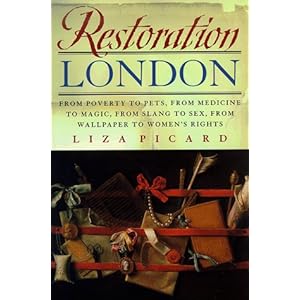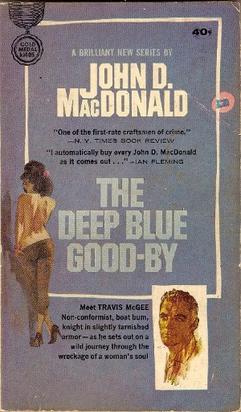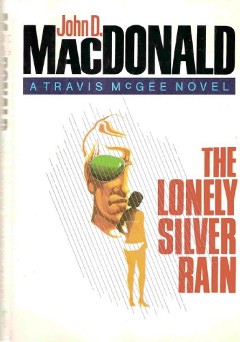A snow day where you live might be a day when kids don’t have to go to school because a heavy snowfall made the roads too treacherous for safe driving.
We don’t get those kinds of snow days here.
In The Valley of the Sun, where I live, a snow day is one of those rare days when white stuff actually falls out of the sky overhead -- something that’s happened only about seven times since 1917. Yesterday would make it eight times.
Some local TV weathercasters, however, tell us that most of what fell on The Valley, yesterday. wasn’t really snow; it was “Graupel” (sounds like: graw - pull)
These TV weather actors (They’re certainly NOT meteorologists!) are from what folks around here call ‘Back East’. So, they don’t understand a basic tenet of desert life: Here in The Valley, graupel counts as snow!
The word “Graupel” does not appear in my rather antiquated unabridged dictionary, I’m afraid, which makes me want to claim that it isn’t a real word. But, unfortunately, it is. And, no, graupel is not the past perfect tense of the word grapple -- which is a shame. Instead, graupel is a word of German origin, meaning “soft hail” or “snow pellets,” according to my online research.
 |
| Erbe, Poole: USDA, ARS, EMU |
Which illustrates why I claim the TV weather actors are wrong.
See, if it can be called “snow pellets,” then we call that “snow” here in a place where it almost never snows. I mean, this is a desert valley where a paper-thin coating of white, which melts within hours, makes front page headlines with multiple color photos.
Add to this: the fact that, by it’s very definition of formation, graupel contains a snowflake at the approximate center of each “snow pellet.” Then, cross index the snow in the center of that pellet, with the fact that we seldom get snow in the center of anything around here, and I think you’ll see why I think Phoenicians have earned the right to call graupel “snow.”
Maybe graupel isn’t snow in New York, Maine or Vermont (not to mention places such as Alaska), where the real white stuff can pile up in deep drifts and banks. But, these are places where they get enough precipitation that folks find it handy to categorize the types.
In Scottsdale, however, we don’t get enough precipitation to categorize. In fact, when we get any at all, my kids run out to experience the rare phenomenon of water (frozen or thawed, it doesn’t matter) falling from the sky. This is an arid land, where what usually comes down from the sky are rays of burning sunlight that spear down to cook your skin lobstershell red (not that we have any lobsters around here, outside of a seafood restaurant).
So, Graupel be damned! If there’s a snowflake in there somewhere, we call it SNOW around here.
And, while we don’t get Snow Days, when I was a kid we used to get something else.
Rain Days
To explain what this means, I’ll have to give you a quick rundown on some of the local geography, so you can understand why Rain Days occurred.
The city of Scottsdale sits just north of Tempe, the town that houses Arizona State University. A long, wide (up to a half-mile in width!) dry wash bed runs from the north to the south, right through the middle of Scottsdale, and empties into the Salt River, which used to separate Scottsdale from Tempe.
The Salt River was dammed up, east of The Valley, early in the 20th Century, to create the reservoir system of the Salt River Project (SRP), a water/power project similar to the Tennessee Valley Authority, which resulted in the Salt River running dry before it ever hit town.
Up until the 1980’s, the Salt River was normally crossed between Scottsdale and Tempe by driving along one of the many roads that ran across the dry river bottom. Only one bridge existed, back then, across the Salt River bed. This bridge, located on Tempe’s Mill Avenue, was known as the (you guessed it) Mill Avenue Bridge.
But, remember: This is the desert, a place of flash floods, where dry washes suddenly run with water five, ten, twenty feet deep -- or even deeper. And, if those reservoirs east of town got too full, SRP had to open the flood gates and let water run down through the old Salt River, in order to reduce the stress on the dams.
Being a desert, of course, this didn’t normally cause problems, because it doesn’t usually rain very often most years. Some years, however, we get torrential downpours. And, these wet years tend to come along every three to seven years.
I grew up, and attended school, in Scottsdale. But, most of our teachers lived in the lower-rent college town of Tempe. So, when it rained for a couple of days straight, or when the snows melted up north, that big wash ran deep with water through the middle of Scottsdale, and SRP tended to open the flood gates on the Salt River, reducing traffic between the two cities to the single umbilical of the Mill Avenue Bridge, resulting in miles long traffic snarls. Consequently, most of the teachers called in to report that they couldn’t get to school on time. At which point, the Scottsdale Unified School District would call a “Rain Day,” canceling all classes.
And, my friends and I would rejoice!
Teen Fun
In high school, a friend and I used to take his truck out to one of the local washes and tow in stranded motorists. Our pay scale for the work was simple:
(A) If the person graciously thanked us verbally, there was no bill. My buddy, who was also a mechanic, would even help motorists get their cars running if an engine had stalled.
(B) Those who thanked us, but complained that there needed to be better signage warning people about the hazard, had to pay the bill of listening to a quick, gentle and kindly education of the many natural signs present in the area, which the driver had overlooked, in hopes s/he would see them next time and avoid a repeat occurrence.
In the belief that someone ignorant of the dangers inherent in desert washes was also ignorant of the dangers of dehydration following a breakdown in the desert, we’d usually also make sure the driver knew to carry a couple of gallons of water in the trunk, along with a jack and some 2x4’s in case they ever got stuck in the middle of nowhere -- the thought here being that we’d save a snowbird, in two cases, with one explanation.
(C) People who seemed to take our assistance for granted, and railed against a backward place where they let wealthy motorists drive expensive cars into such deep water, were told that our towing fee was twenty bucks.
On two occasions, the driver refused to pay, at which point we explained we would then be happy to push his car back to where we’d found it, and he could hike to the nearest gas station to call a tow truck, after which he could pay a towing bill that would probably cost significantly more than twenty bucks. (In both cases, we got the twenty bucks, so I never really discovered if my buddy and I could have brought ourselves to push somebody’s car back into the water.)
Today
Sadly, for my kids, Rain Days came to an inglorious end in the late 80’s, after a rash of bridge-building broke out, and several substantial bridges spanned the Salt River bed. This, combined with the Scottsdale Greenbelt project, which turned that long, wide wash into an interlinked series of parks and golf courses with bridges across it on all major roads, made it possible for teachers to get to school -- even on the rainiest day.
My ten-year-old son finds this all very unfair. And, to add insult to injury, yesterday, when it snowed just a few blocks away, he was spending his third day home from school, sick. So, this kid who’s never seen snow, didn’t get the chance to go play in the white stuff.
 |
| The boy who has never seen snow. |
I made the decision, to keep my son from getting his first look at snow (even if it was just graupel), so my dad could keep his appointment with the doctor who was scheduled to remove two areas of skin cancer from his back.
So, maybe you can understand why I miss the simple joys of the old Rain Day.
On a more positive note: I told my son I thought there are still enough unmarked washes around that he and his friends can go tow people out during floods, when they’re in high school.
See you in two weeks,
--Dix






















